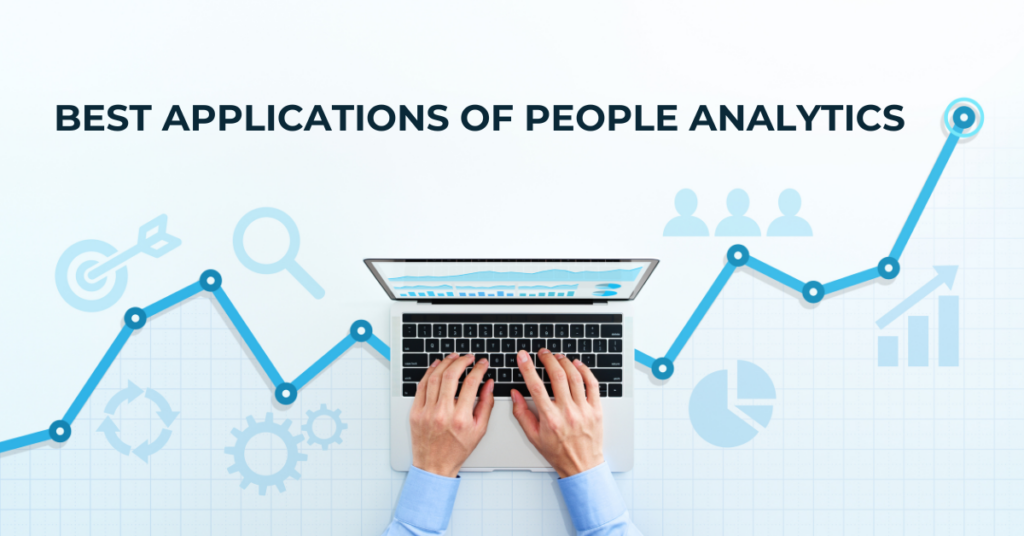What is People Analytics and What are its Most Useful Applications?

- What is People Analytics and How Does it Differ From Traditional HR Practices?
- What are Some Common Applications of People Analytics in Recruitment and Talent Management?
- How Can People Analytics Help in Predicting Employee Performance and Turnover?
- What are the Key Challenges in Implementing People Analytics in the Workplace?
- How Can HR Professionals Use People Analytics to Drive Strategic Decision-Making?
The HR department of a company is the backbone that supports and nurtures the organization’s most valuable asset: its people. As businesses evolve, so does the HR landscape, with technology playing an increasingly crucial role in transforming the field. In 2021, the HR technology market in India alone was valued at approximately $1.1 billion. Now, within the domain of HR, people analytics has emerged as a key player, radically reorienting how HR departments operate. Considering its pivotal role, this blog post explores the transformative impact of people analytics on HR functions.
What is People Analytics and How Does it Differ From Traditional HR Practices?
People analytics, also known as human resources analytics, dives deep into HR data and offers a comprehensive view of the workforce. It gathers, analyzes, and interprets data related to employee performance, engagement, and retention. Furthermore, people analytics applies advanced analytics and machine learning to predict future workforce trends and outcomes. This method enables HR professionals to make strategic decisions that align with organizational goals. Additionally, it plays a crucial role in talent management, helping identify the right talent and optimize workforce planning.
In contrast, traditional HR practices are more subjective, often relying on intuition and past experiences to make decisions. People analytics, however, shifts the focus toward data-driven decisions. This shift ensures that HR strategies are based on factual data rather than assumptions. Consequently, people analytics enhances the accuracy of human resource strategy and contributes to a more equitable and efficient workplace.
What are Some Common Applications of People Analytics in Recruitment and Talent Management?

1. Streamlining Recruitment Processes
People analytics significantly enhances recruitment by gathering relevant information through extensive HR data analysis. It pinpoints where the best candidates come from and sheds light on the efficiency and costs of different recruitment channels. Moreover, this approach optimizes recruitment advertising, ensuring job postings reach the most qualified candidates. Additionally, people analytics helps in understanding the effectiveness of various recruitment strategies, leading to more informed decisions and a streamlined, cost-effective hiring process.
2. Enhancing Employee Onboarding
People analytics plays a pivotal role in improving the onboarding experience. It evaluates the effectiveness of current onboarding practices, identifying strengths and areas for improvement. Furthermore, this data-driven approach helps customize onboarding programs to meet the unique needs of new hires, enhancing their early experiences and retention. Additionally, people analytics provides insights into how onboarding practices influence long-term employee performance and satisfaction. Therefore, organizations can ensure a smoother transition for new employees, setting them up for success from day one.
ALSO READ: A Comprehensive Guide to Top 10 Essential Functions of Human Resource Management
3. Optimizing Compensation and Benefits
Through people analytics, organizations can create more attractive compensation and benefits packages. This method uses workforce analysis to understand employee preferences and market trends. Furthermore, it aligns compensation strategies with overall human resource strategy, ensuring they support organizational goals. Additionally, people analytics enables HR to monitor the impact of rewards on employee motivation and retention, allowing for timely adjustments. Thus, companies can maintain a competitive edge in attracting and retaining talent while ensuring their reward strategies are cost-effective and aligned with business objectives.
4. Talent Management
People analytics significantly transforms talent management by meticulously mapping out individual career paths and pinpointing employee growth opportunities. It adeptly identifies existing skills gaps and potential areas for professional development, guiding the creation of personalized career progression plans for each employee. Additionally, this innovative tool empowers HR professionals to strategically match employees with projects and roles that align with their unique strengths and career aspirations. Consequently, organizations not only retain top talent but also actively invest in their employee’s career development, fostering a nurturing culture of continuous growth and opportunity.
How Can People Analytics Help in Predicting Employee Performance and Turnover?
1. Leveraging Predictive Analytics
People analytics uses statistical models and machine learning algorithms to assess factors such as work history, performance evaluations, and engagement levels. By correlating these factors with outcomes, people analytics can predict which employees are likely to perform well or are at risk of leaving, enabling HR to take preemptive actions to support or retain them.
2. Utilizing Big Data for Workforce Analysis
Big data is at the heart of people analytics, providing a rich source of insights for workforce analysis. Organizations can gain a deeper understanding of employee behaviors and preferences by aggregating and analyzing vast amounts of data from different sources—such as HR systems, employee surveys, and social media. This comprehensive view allows for identifying trends and correlations that might not be visible through traditional analysis, enhancing the prediction of performance and turnover.
ALSO READ: How HR Consultants Can be Effective in Organizational Change
3. Implementing Continuous Feedback Loops
People analytics facilitates the implementation of continuous feedback loops, a mechanism crucial for understanding and predicting employee performance and turnover. Organizations can track employee sentiment and performance changes over time by continuously collecting and analyzing feedback from performance reviews, one-on-one sessions, and employee surveys. This real-time data enables HR to identify issues as they arise and adjust their human resource strategy accordingly, preventing potential performance dips or turnover.
4. Integrating Sentiment Analysis
Sentiment analysis, a component of human resources analytics, plays a key role in predicting employee turnover by analyzing the emotional tone behind employee communications. This technique examines text from emails, chat messages, and feedback surveys to gauge employee morale and satisfaction. Organizations can proactively address employee engagement and satisfaction issues by identifying negative sentiment trends.
What are the Key Challenges in Implementing People Analytics in the Workplace?

1. Data Fragmentation Across Systems
Firstly, people analytics applications face the issue of fragmented data across multiple systems. Merging and sanitizing data from various departments is a complex process essential for a comprehensive workforce analysis. Ensuring data quality and consistency is paramount for effective people analytics.
2. Skills Gap in Data Analytics
Talent management is often hindered by a significant gap in data analytics skills among HR professionals. The necessity for specialized training to interpret and utilize data effectively poses a challenge when it comes to making data-driven decisions.
3. Ensuring Privacy and Data Security
Maintaining the privacy and security of employee data is crucial. As human resource strategy increasingly relies on data, navigating the complexities of data privacy and ensuring compliance with regulations is a key concern.
4. Limited IT and Analytical Infrastructure
The implementation of people analytics requires substantial IT resources. Many organizations, particularly smaller ones, struggle with the lack of necessary infrastructure, making adopting advanced analytics tools a significant hurdle.
ALSO READ: How HR Consultants Can be Effective in Organizational Change
5. Handling Diverse Data Sources
The applications of people analytics are complicated by the diversity of HR tools and data sources, which often operate in silos. Hence, integrating these systems to leverage analytics effectively remains a significant challenge.
6. Resistance From Employees and HR Professionals
There is often resistance to adopting analytics-driven approaches within HR, stemming from concerns about the loss of the “human” element in human resources. Consequently, overcoming skepticism and demonstrating the value of analytics in improving decision-making is essential.
7. Continuous Evolution of Skills and Roles
Lastly, the dynamic nature of roles and the continuous evolution of employee skills demand ongoing updates to the data. Establishing a current and accurate skills inventory is critical for making data-driven decisions, impacting both talent management and overall business strategy.
How Can HR Professionals Use People Analytics to Drive Strategic Decision-Making?
HR professionals can use people analytics by first gathering information through comprehensive HR data analysis across various metrics, such as recruitment, retention, performance, and employee engagement. Once analyzed through human resources analytics tools, this data reveals patterns and trends essential for effective talent management. For instance, by identifying characteristics of high-performing employees, HR can refine hiring criteria to ensure new hires possess similar traits, thereby enhancing the overall quality of the workforce.
Additionally, these analytics enable HR to make data-driven decisions about employee development and retention strategies. For example, by using data gathered from workforce analysis, HR can pinpoint factors that contribute to employee turnover and address these issues proactively. Similarly, people analytics can guide the development of personalized career development plans, matching employees’ strengths and interests with organizational needs. This strategic alignment between individual aspirations and business goals fosters a motivated, engaged workforce, driving organizational success.
ALSO READ: The Definitive Guide to Continuous Improvement Feedback Loop
If you are looking to gain in-depth knowledge of people analytics and master the vital craft of managing employees in your organization, consider joining Emeritus’ online HR courses today!
Write to us at content@emeritus.org





